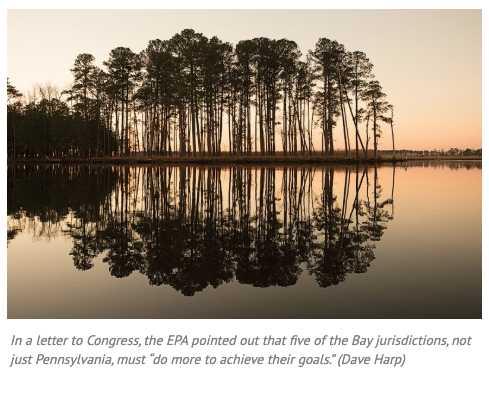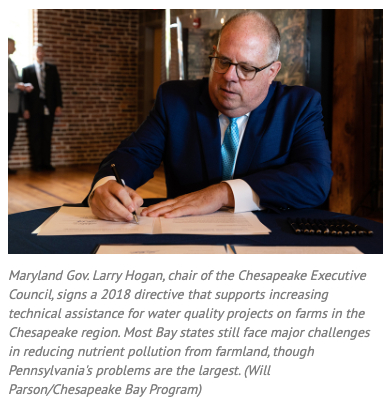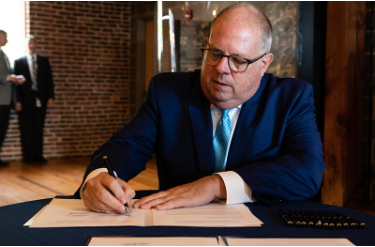In a letter to members of Congress, the U.S. Environmental Protection Agency on Tuesday maintained its support for Chesapeake Bay restoration efforts while criticizing Maryland, which has threatened to take the agency to court.
 The letter was the latest salvo in an escalating battle over whether the federal agency is doing enough to prod Pennsylvania, which is far behind its Bay commitments, to take greater action.
The letter was the latest salvo in an escalating battle over whether the federal agency is doing enough to prod Pennsylvania, which is far behind its Bay commitments, to take greater action.
It’s a dispute that appears increasingly likely to head to court. The Chesapeake Bay Foundation on Monday announced its intent to sue the EPA for failing to use its Clean Water Act authority against Pennsylvania.
That followed a Jan. 9 call from Maryland Gov. Larry Hogan calling for his state attorney general to initiate legal actions against Pennsylvania, citing the “obvious inadequacy” of its Bay cleanup plan, and against the EPA, which he said has “no intention” of forcing his northern neighbor to do more.
Virginia Gov. Ralph Northam has also said his state may take legal action.
The EPA’s letter said it “will continue to work diligently and professionally with all the jurisdictions and stakeholders engaged in supporting restoration of the Bay.”
But it also took aim at Maryland for threatening to sue the agency and Pennsylvania. “Diverting our collective resources to litigation will undoubtedly distract from efforts to restore the Bay and harm the existing partnership among the parties that has been the hallmark of the effort,” said the letter from EPA Region III Administrator Cosmo Servidio.
It was in response to a letter from 20 members of Congress sent earlier in the month questioning the agency’s commitment to Bay restoration.
 The agency has come under increasing fire for not doing enough to press Pennsylvania to do more. The state is far behind in its efforts to reduce nutrient pollution and last year submitted a cleanup plan that fell 25% short of achieving its nitrogen reduction goals and identified an annual funding gap of $324 million.
The agency has come under increasing fire for not doing enough to press Pennsylvania to do more. The state is far behind in its efforts to reduce nutrient pollution and last year submitted a cleanup plan that fell 25% short of achieving its nitrogen reduction goals and identified an annual funding gap of $324 million.
In reviewing Pennsylvania’s plan at the end of last year though, the agency acknowledged the shortfall but did not announce any new regulatory actions. Instead, it offered the state more technical and financial support.
In its letter to Congress, the EPA pointed out that five of the Bay jurisdictions, not just Pennsylvania, must “do more to achieve their goals” — the others being Maryland, Virginia, New York and Delaware. Only the District of Columbia and West Virginia are on track to meet cleanup goals by the 2025 deadline.
In December, the EPA called on the others to provide more detailed cleanup plans, but its recent letter singled out Maryland — the first to threaten legal action — for criticism, saying it needs to do more “to provide confidence that it can comply with its own responsibilities” to meet 2025 goals.
The letter contended that the state was a year behind schedule in submitting a number of stormwater permits for approval and, when it finally did so near the end of 2019, the EPA rejected them for being incomplete.
Meanwhile, Sen. Chris Van Hollen, D-MD, a key author of the Congressional letter, issued a statement saying he was “frustrated and concerned” with the EPA’s response.
“Their response ducks the main question we asked: do they plan to enforce the pollution reduction targets in the Bay Agreement? Failure to enforce these targets puts the health of the Bay at risk. And without stronger assurances, we must take them to court.”
Note: This article has been updated to incorporate comments from Sen. Chris Van Hollen.
By Karl Blankenship


